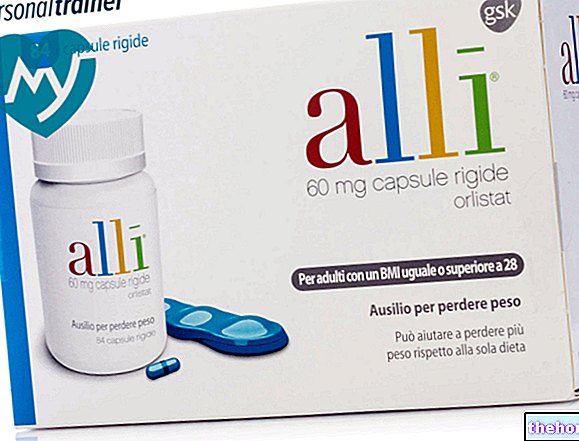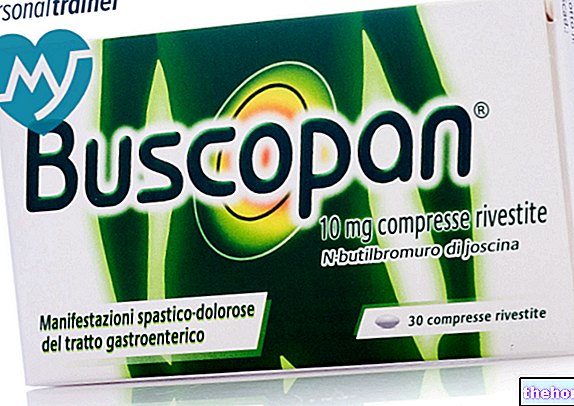Active ingredients: Calcium (Calcium lactate gluconate and calcium carbonate)
Calcium Sandoz 1000 mg effervescent granules
Why is Calcium sandoz used? What is it for?
Calcium Sandoz is a mineral supplement that contains two active ingredients: calcium lactate gluconate and calcium carbonate. Both supply the body with calcium which is an important element for the proper functioning of the nervous system, muscles, heart and blood vessels and is a fundamental component of bones and teeth.
This medicine is indicated for:
- the prevention and treatment of calcium deficiency in the blood;
- the prevention and treatment of a disease causing weakening of the bones (osteoporosis), in addition to specific therapy;
- the treatment of a disease affecting the development of bones in children (rickets) and a bone disorder that causes pain, deformities and fractures (osteomalacia), in combination with vitamin D3.
Contraindications When Calcium sandoz should not be used
Do not take Calcium Sandoz
- if you are allergic to the active substances or any of the other ingredients of this medicine
- if you have high levels of calcium in the blood (hypercalcaemia) or in the urine (hypercalciuria);
- if you suffer from kidney stones (nephrocalcinosis, nephrolithiasis).
Precautions for use What you need to know before taking Calcium sandoz
Talk to your doctor or pharmacist before taking Calcium Sandoz.
Take this medicine with caution and tell your doctor in the following cases:
- if you have severe kidney problems (kidney failure), especially if you are taking preparations that contain aluminum. In this case, during the treatment, the doctor will have to check the levels of calcium and phosphate in the blood;
- if you have a slight increase in blood calcium levels (mild hypercalciuria, more than 300 mg / 24 hours or 7.5 mmol / 24 hours) or if you have had kidney stones in the past. In this case, your doctor will need to prescribe a lower dose or stop taking Calcium Sandoz if he deems it necessary. Also, if you are prone to stone formation, take a large amount of fluids while being treated with this medicine.
If you take Calcium Sandoz in high doses, especially if you take vitamin D at the same time, there may be an excessive increase in blood calcium levels (hypercalcaemia) resulting in kidney problems (impaired kidney function). In this case, your doctor will need to periodically check your blood calcium levels and your kidney function.
Interactions Which drugs or foods can modify the effect of Calcium sandoz
Tell your doctor or pharmacist if you are taking, have recently taken or might take any other medicines.
Take Calcium Sandoz with caution and tell your doctor if you are taking the following medicines:
- thiazide diuretics, used to facilitate the elimination of urine, because they can cause an increase in the levels of calcium in the blood (hypercalcemia) which therefore the doctor must check periodically;
- systemic corticosteroids, used to relieve the symptoms of inflammation and allergies, as they reduce the effectiveness of Calcium Sandoz and the dose may need to be increased;
- tetracyclines used to treat infections caused by bacteria, as calcium reduces their effectiveness. In this case, tetracycline preparations should be administered at least 2 hours before or 4-6 hours after taking Calcium Sandoz ;
- digitalis used to treat some heart problems, as calcium can increase their toxicity. In this case, the doctor must periodically check the activity of your heart (electrocardiogram, ECG) and the calcium levels in the blood;
- bisphosphonates used to treat bone disorders and sodium fluoride to treat tooth decay. These medicines should be administered at least 3 hours before taking Calcium Sandoz, as calcium may reduce their effectiveness.
Calcium Sandoz with food
Take this medicine only after 2 hours have elapsed after ingesting foods such as spinach, rhubarb and whole grains.
Warnings It is important to know that:
Pregnancy and breastfeeding
If you are pregnant or breast-feeding, think you may be pregnant or are planning to have a baby, ask your doctor or pharmacist for advice before taking this medicine.
The adequate amount to be taken per day (including food and supplementation), for women with normal pregnancy and breastfeeding, is 1,000-1,300 mg of calcium.
During pregnancy, the daily calcium intake should not exceed 1,500 mg.
If you suffer from calcium deficiencies and are pregnant or breast-feeding, you can take this medicine.
Driving and using machines
This medicine does not affect the ability to drive or use machines.
Calcium Sandoz contains aspartame
This medicine contains a source of phenylalanine. It can be harmful to you if you have phenylketonuria.
Dose, Method and Time of Administration How to use Calcium sandoz: Posology
Always take this medicine exactly as your doctor or pharmacist has told you.
If in doubt, consult your doctor or pharmacist. The recommended dose is 500 - 1500 mg per day.
Dissolve the sachet in a glass of water and drink the contents immediately. You can take this medicine with or without food.
Use in children
The recommended dose is 500 - 1000 mg per day.
Overdose What to do if you have taken too much Calcium sandoz
If you take more Calcium Sandoz than you should
After taking an excessive dose of this medicine, the following symptoms may occur: nausea, vomiting, thirst, even very intense (polydipsia), excessive production and elimination of urine (polyuria), loss of fluids from the body (dehydration) , constipation (constipation).
If you take high doses of this medicine for prolonged treatment (chronic overdose), you may experience an increase in blood calcium levels (hypercalcaemia) which can lead to calcium build-up in the blood vessels or organs (vascular and "organ calcification). .
In case of accidental ingestion / intake of Calcium Sandoz, notify your doctor immediately or go to the nearest hospital.
If you forget to take Calcium Sandoz
Do not take a double dose to make up for a forgotten dose.
If you stop taking Calcium Sandoz
Consult your doctor or pharmacist before stopping treatment with Calcium Sandoz. If you have any further questions on the use of this medicine, ask your doctor or pharmacist
Side Effects What are the side effects of Calcium sandoz
Like all medicines, this medicine can cause side effects, although not everybody gets them. The following side effects may occur:
Uncommon (may affect up to 1 in 100 people)
- increased calcium levels in the blood (hypercalcemia) and urine (hypercalciuria).
Rare (may affect up to 1 in 1000 people)
- allergic reactions (hypersensitivity), such as skin irritation (rash, hives) and itching;
- flatulence, constipation (constipation), diarrhea, nausea, vomiting, pain in the abdomen.
Very rare (may affect up to 1 in 10,000 people)
- severe allergic reactions (anaphylactic reactions, face edema, angioneurotic edema).
Reporting of side effects
If you get any side effects, talk to your doctor or pharmacist. This includes any possible side effects not listed in this leaflet. You can also report side effects directly via the national reporting system at: https://www.aifa.gov.it/content/segnalazioni-reazioni-avverse. By reporting side effects you can help provide more information about safety of this medicine
Expiry and Retention
Keep this medicine out of the sight and reach of children.
Store in the original packaging
Do not use this medicine after the expiry date which is stated on the package after "EXP".
The expiry date refers to the last day of that month.
Do not throw any medicines via wastewater or household waste. Ask your pharmacist how to throw away medicines you no longer use. This will help protect the environment.
What Calcium Sandoz contains
- The active ingredients are: calcium lactate gluconate and calcium carbonate. Each sachet contains 5,880 mg of calcium lactate gluconate and 600 mg of calcium carbonate (equivalent to 1,000 mg or 25 mmol of calcium).
- The other ingredients are: anhydrous citric acid, aspartame E951, lemon flavor powder.
What Calcium Sandoz looks like and contents of the pack
Pack of 30 sachets of 1000 mg effervescent granules.
Source Package Leaflet: AIFA (Italian Medicines Agency). Content published in January 2016. The information present may not be up-to-date.
To have access to the most up-to-date version, it is advisable to access the AIFA (Italian Medicines Agency) website. Disclaimer and useful information.
01.0 NAME OF THE MEDICINAL PRODUCT
CALCIUM SANDOZ 1000 MG EFFERVESCENT GRANULES
02.0 QUALITATIVE AND QUANTITATIVE COMPOSITION
Each sachet contains 5,880 mg of calcium lactate gluconate and 600 mg of calcium carbonate (equivalent to 1,000 mg or 25 mmol of calcium).
Excipient with known effect: aspartame (E951).
For the full list of excipients: see section 6.1.
03.0 PHARMACEUTICAL FORM
Effervescent granules.
04.0 CLINICAL INFORMATION
04.1 Therapeutic indications
- Prevention and treatment of calcium deficiency
- Calcium supplementation as a supplement to specific therapy in the prevention and treatment of osteoporosis.
- Rickets and osteomalacia, in addition to vitamin D3 therapy
04.2 Posology and method of administration
Adults: 500 - 1,500 mg per day
Children 500 - 1,000 mg per day
The contents of the sachet should be dissolved in a glass of water and the resulting solution drunk immediately. The contents of the Calcium Sandoz sachet can be taken with or without food
04.3 Contraindications
- Hypersensitivity to the active substances or to any of the excipients listed in section 6.1.
- Pathologies and / or conditions involving hypercalcemia and / or hypercalciuria
- Nephrocalcinosis, nephrolithiasis
04.4 Special warnings and appropriate precautions for use
In patients with mild hypercalciuria (over 300 mg / 24 hours or 7.5 mmol / 24 hours), or with a history of urinary stones, monitoring of urinary calcium excretion is required. If necessary, the calcium dose should be reduced or therapy should be discontinued. An increased fluid intake is recommended in patients predisposed to urinary tract stone formation.
In patients with renal insufficiency, calcium salts should be taken under medical supervision with monitoring of serum calcium and phosphate levels.
During high dose therapy and especially in the case of concomitant treatment with vitamin D, there is a risk of hypercalcaemia with consequent impairment of renal function. In these patients, serum calcium levels should be monitored and renal function monitored.
There have been reports from the literature that refer to a possible increase in the absorption of aluminum with citrate salts.
Calcium Sandoz (which contains citric acid) should be used with caution in patients with very severe renal insufficiency, especially in those who are also taking preparations containing aluminum.
Each sachet of Calcium Sandoz contains aspartame, a source of phenylalanine and may be dangerous for people with phenylketonuria.
04.5 Interactions with other medicinal products and other forms of interaction
Thiazide diuretics reduce urinary excretion of calcium. Due to the increased risk of hypercalcaemia, serum calcium should be regularly monitored during concomitant use of thiazide diuretics.
Systemic corticosteroids reduce the absorption of calcium. During concomitant use, the dose of Calcium Sandoz may need to be increased.
Tetracycline preparations administered concomitantly with calcium preparations may not be well absorbed. For this reason, tetracycline-containing preparations should be administered at least 2 hours before or 4-6 hours after oral calcium intake.
Hypercalcaemia resulting from calcium treatment may increase the toxicity of cardiac glycosides. Patients should be monitored for electrocardiogram (ECG) and serum calcium levels.
In case of concomitant treatment with bisphosphonates or sodium fluoride, this preparation should be administered at least 3 hours before taking Calcium Sandoz, as the gastrointestinal absorption of both bisphosphonates and sodium fluoride may be reduced.
Oxalic acid (present in spinach and rhubarb) and phytic acid (present in whole grains) can inhibit calcium absorption by forming insoluble compounds with calcium ions. Patients should not take calcium-containing products within 2 days. hours from ingestion of foods rich in oxalic and phytic acid.
04.6 Pregnancy and lactation
The adequate daily intake (including food and supplementation) for women with normal pregnancy and breastfeeding is 1,000-1,300 mg of calcium.
During pregnancy, the daily calcium intake should not exceed 1,500 mg. Significant amounts of calcium are secreted into breast milk during lactation but do not cause adverse effects on the newborn.
In case of calcium deficiency, Calcium Sandoz effervescent granules can be used during pregnancy and breastfeeding.
04.7 Effects on ability to drive and use machines
Calcium Sandoz does not affect the ability to drive and use machines.
04.8 Undesirable effects
Adverse reactions are listed below according to system organ class and frequency convention. Frequency is defined as: uncommon (> 1 / 1,000, rare (> 1 / 10,000, very rare (
Disorders of the immune system
Rare: hypersensitivity, such as rash, itching, hives.
Very rare: isolated cases of systemic allergic reactions (anaphylactic reactions, face edema, angioneurotic edema) have been reported.
Metabolism and nutrition disorders
Uncommon: hypercalcemia, hypercalciuria.
Gastrointestinal disorders
Rare: flatulence, constipation, diarrhea, nausea, vomiting, abdominal pain.
Reporting of suspected adverse reactions
Reporting of suspected adverse reactions occurring after authorization of the medicinal product is important as it allows continuous monitoring of the benefit / risk balance of the medicinal product. Healthcare professionals are asked to report any suspected adverse reactions via the national reporting system. "address www.agenziafarmaco.gov.it/it/responsabili.
04.9 Overdose
Overdose leads to hypercalciuria and hypercalcemia. Symptoms of hypercalcaemia can include: nausea, vomiting, thirst, polydipsia, polyuria, dehydration and constipation. Chronic overdose resulting in hypercalcaemia can cause vascular and organ calcification.
The threshold for calcium intoxication is from supplements that exceed 2,000 mg per day, taken for many months.
Treatment of overdose
In case of intoxication, treatment should be stopped immediately and fluid deficiency corrected.
In the case of chronic overdose in which hypercalcemia is present, the initial therapeutic phase is hydration with saline solution. Therefore, a loop diuretic (eg furosemide) may be used to further increase calcium excretion and to prevent volume overload, but thiazide diuretics should be avoided.
In patients with renal insufficiency, hydration is ineffective and they must undergo dialysis. In case of persistent hypercalcaemia, contributing factors, for example vitamin A or D, hypervitaminosis, primary hyperparathyroidism, malignant tumors, renal insufficiency or immobilization must be excluded. .
05.0 PHARMACOLOGICAL PROPERTIES
05.1 Pharmacodynamic properties
Pharmacotherapeutic group: mineral supplements.
ATC code: calcium carbonate (A 12 AA 04), calcium lactate gluconate (A 12 AA 06).
Calcium is an essential mineral, necessary for the formation and maintenance of bones, for the electrolyte balance of the body and for the correct functioning of numerous regulatory mechanisms.
05.2 Pharmacokinetic properties
Calcium Sandoz contains two calcium salts, calcium lactate gluconate and calcium carbonate, which dissolve rapidly in water to make the active ionized form of calcium freely available.
Absorption
About 25-50% of the ingested calcium dose is absorbed, mainly in the proximal part of the small intestine, and released into the exchangeable calcium supply.
Distribution and metabolism
The mineral component of bones and teeth contains 99% of the body's calcium. The remaining 1% is present in intra and extra-cellular fluids.
Approximately 50% of the total calcium content in the blood is in the physiologically active ionized form, with approximately 5% complexed to citrate, phosphate or atria anions. The remaining 45% of serum calcium is bound to proteins, mainly albumin.
Elimination
Calcium is excreted in the urine, feces and sweat. Urinary excretion depends on glomerular filtration and tubular reabsorption.
05.3 Preclinical safety data
There is no relevant information about the safety assessment in addition to what is reported elsewhere in the Summary of Product Characteristics (SmPC).
06.0 PHARMACEUTICAL INFORMATION
06.1 Excipients
Anhydrous citric acid
Aspartame
Lemon flavor powder
06.2 Incompatibility
Not relevant.
06.3 Period of validity
3 years.
06.4 Special precautions for storage
Store in the original packaging.
06.5 Nature of the immediate packaging and contents of the package
Sachet made of coupled paper / aluminum / polyethylene
Packaging:
30 sachets of 1,000 mg.
06.6 Instructions for use and handling
No special instructions.
07.0 MARKETING AUTHORIZATION HOLDER
Sandoz S.p.A., Largo U. Boccioni 1 - Origgio (VA)
08.0 MARKETING AUTHORIZATION NUMBER
005259041 - "1000 effervescent granules" - 30 paper / aluminum / polyethylene sachets
09.0 DATE OF FIRST AUTHORIZATION OR RENEWAL OF THE AUTHORIZATION
Renewal: 01.06.2005




























